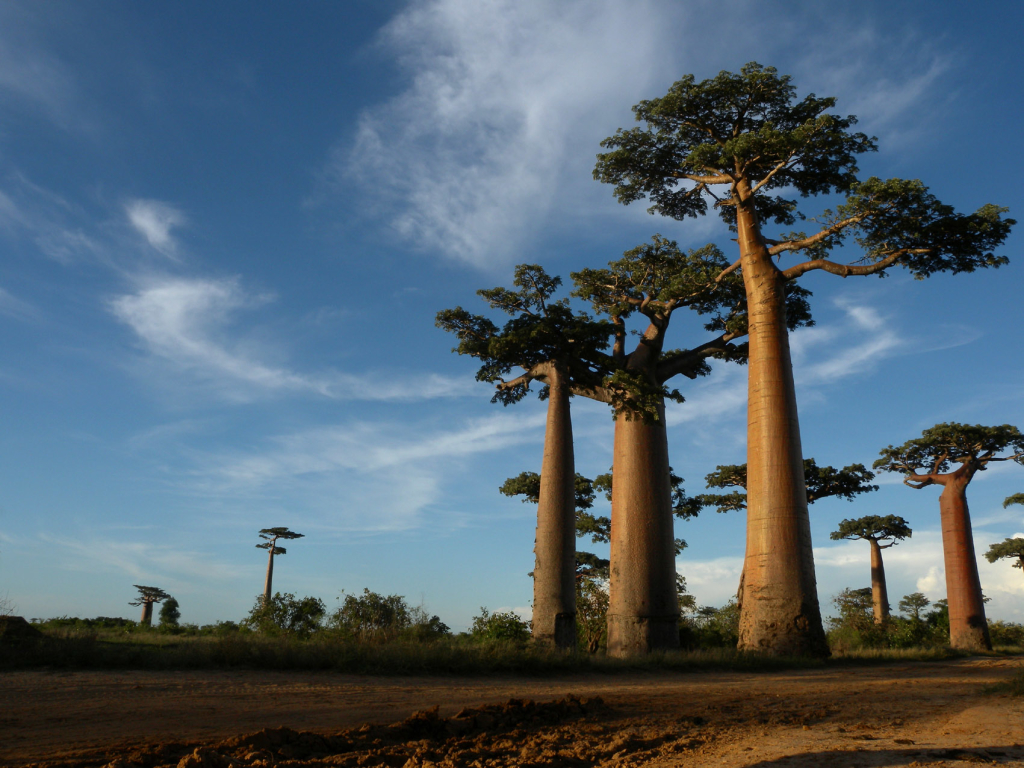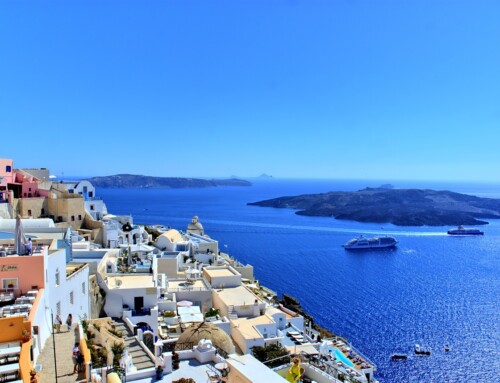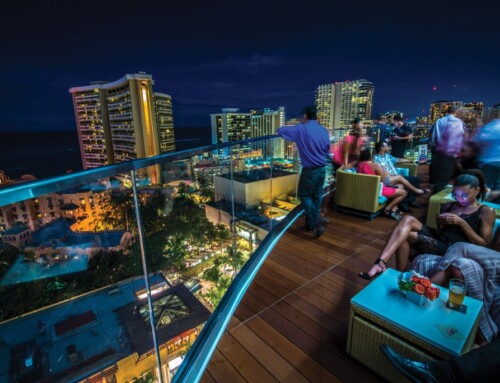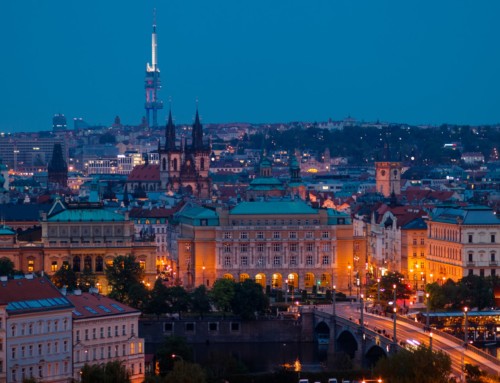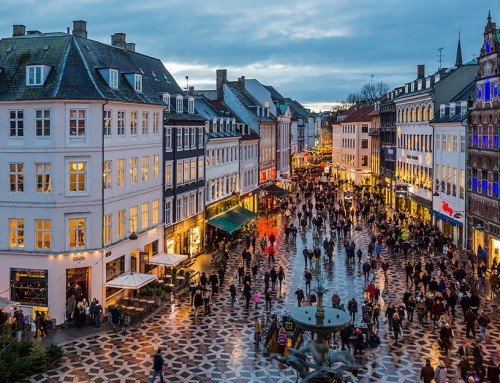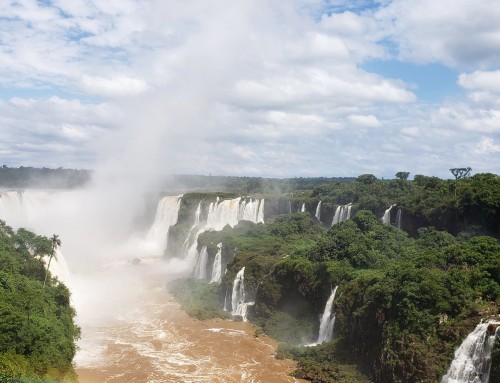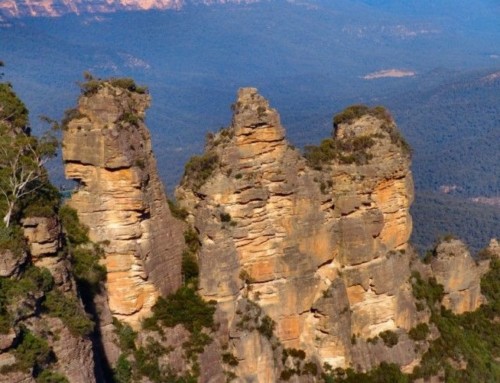Madagascar is an island country. It is situated in the Indian Ocean. It lies off the southeastern coast of South Africa. It has small islands besides the Madagascar Island, which is the fourth largest island in the world. This island is a hotspot for biodiversity. It has Mauritius to the east and Mozambique is the nearest mainland state to its west. Madagascar has roads, rail and waterways as modes of transport.
Tourist Attractions
Avenue of Baobabs
The alley of Baobabs is the most visited place in the Manabe region of western Madagascar. A group baobab trees line the road between Morondava and Beloni Tsiribihna. It is Madagascar’s first national monument. The trees are up to 800 years old. They remind the tourist of a legacy of dense tropical forests in Madagascar which once thrived there.
Isalo National Park
This national park lies in the Ihorombe Region of Madagascar. It was created in 1962. The Bara people, a nomadic tribe, inhabited this region. The climate here is dry tropical with seasonal rainfall.
The area of the park has a wide terrain, which includes grasslands, deep canyons, sandstone formations and palm-lined oasis. A guide has to accompany the visitor entering the park. Trekkers can avail of treks, both long and short ones. There are several natural pools in the park. The visitors enjoy swimming in them.
The park has a fauna of diverse nature including birds, reptiles, mammals and frogs. The tourists can spot birds like Benson’s Rock Thrush, the Madagascar Ibis and the Knob-billed Duck. The white-lipped frog, the Malagasy rainbow frog, etc can also be seen here. The plant species range up to over 400, and many of them are endemic to the region.
Ranomafana National Park
This national park is a World Heritage Site. It is on the southeastern part of Madagascar in Haute Matsiatra and Vatovavy-Fitovinary. The Tropical Rainforest occupies an area of about 161 sq mt. There are a number of rare plants and animal species to be found here. Established in 1991, it has unique biodiversity. It is a classic example of cloud forest. The langur is a famous inhabitant of this park.
Amber Mountain National Park
This national park is situated in the Diana Region of northern Madagascar. It is famous for its crater lakes and waterfalls. It is a very biologically diverse national park. It has a variety of species of birds, reptiles and mammals. It covers a volcanic massif of about 18,200 hectares. The park was established in the year 1958.
It is a botanist’s heaven. Animal lovers and bird watchers will have an educative tour in this park. There are about 20km of walking tracks allowing the tourists close contact with the animals. This is possible only during the dry season.
Ankarafantsika National Park
This park is 450km north from Tana and 110km south from Mahajanga. In 2002, it was declared as a national park. It occupies an area of 1,350 sq km. This is one of the last dry deciduous forest in Madagascar. It has savannahs area and forests around the Ravelobe Lake. The park is in the Boeny region of Madagascar. The Sakalava ethnic group live and farm here. The park has the Betsiboka River to the west and the Mahajamba River to the east. There are guides and lodging facilities available at the park.
A night walk by the tourists through this park is very exciting. At this time, one can see a number of lemur species. It is also a bird watcher’s paradise. Besides the reptiles, one gets to see some extremely rare Madagascar big-headed turtles and crocodiles around the lake. The park has a rich flora too.
Nosy Mangabe Special Reserve
This is a small island in Antongil Bay. It lies in eastern Madagascar. The visitor can access it by a boat. The Special Reserve is a part of the larger Masola National Park. This island is densely covered with humid forests. It takes an hour from Maroantsetra and ideal for a day trip. It has become famous because of the nocturnal Aye-aye.
A nature lover can camp here for a day or two as not to miss the daylight and nocturnal beauties of the animal kingdom. One can hike around and see the beach called Plage des Hollandias, a deserted lighthouse, a waterfall, graves of the first inhabitants and the rock inscriptions left by the Dutch sailors. The tourists can take a swim in the beach waters and relax seeing the rainforest, which lies just a few meters away. Park fees and permit fees are taken from every tourist. There is a basic kitchen and other shared facilities at the camping site.
Zahamena National Park
The park is on the eastern side of Madagascar Island. The protected area is 643 sq km from which the national park from which the national park occupies 423 sq km. The climate here is humid with moderate temperatures. All year round it showers.
The park has the western and the eastern side divided by several villages. It is hilly terrain with steep valleys. The evergreen forests below form a high canopy. The mid areas are covered with trees, ferns, etc. The higher levels have dense montane forest. This national park is to some extent not fully explored.
The park has a high biodiversity. The forest areas have a number of mammal species. The Bird International has identified an avifauna of 731km. The flora are rich with different kinds of orchids, palms and woody plants.
To reach the park, it is a bit difficult due to the improper path. The visitors can venture here only during the day and dry season from July to November. The 8km stretch from the entrance can be walked viewing the unspoilt beauty of nature.
There are two circuits to explore Zahamena National Park. The Anbosy Circuit that goes through the forest and ends at the Alaotra Lake. It takes a whole day to trek this distance of 14km. A camping place is available for an overnight stay next to the pool. The Bemoara Circuit is another trek, which takes the trekkers to a 80mt high waterfall. The visitors camp and enjoy the beauty of the waterfall and the surrounding and spot some wildlife. This trail is shorter than the first trail. You can club together the two circuits and spend three days in total wilderness. You can get some very basic accommodation in the villages nearby. The tourists should be well-equipped with necessary first aid and all personal things.
Cape Sainte Marie
This cape in Madagascar lies at the southernmost part in the region of Androy. This cape town also has a Special Reserve. This reserve was created to the save the delicate ecosystem, flora and fauna. It is a dry, arid zone and has no water resources. The rainfall here is very scanty.
The visitors visit the reserve for the dunes, beautiful ecosystem and the coast landscape. It can be visited throughout the year. Sainte Marie is best known for its turtle population, which is the highest in the world, both endemic and terrestrial turtle species. Another attraction here on the coast are the humpback whales with their calves that pass by between August and November.
You also find mammals and reptiles. As you stroll on the white beaches, you may be lucky to spot the bones and eggs of the extinct elephant birds whose tail measured 3mts. The vegetation due to less rainfall is mainly of dwarf plants with thorns. You will see the periwinkle plant with pretty pink flowers.
The two trail circuits within the reserve can be completed in a day. They are the Cape circuit and the Cave circuit. The tourists can pay a fee and camp within the reserve. You will find restaurants and basic accommodation in Lavanono, 20km from the reserve. Carry hats, first aid, sunscreen cream, water, etc.
The tourists need a passport valid for six months along with the visa. You can also avail of a 30 days visa on arrival in Madagascar. Visa on arrival is free. The tourist should make all enquiries prior to their trip to Madagascar at the home country.
The tourists arrive at Ivato International Airport. It is at a distance of 16km from Antananarivo, the capital of Madagascar. Besides Air Madagascar, there are other airlines operating to Madagascar.
Accommodation and restaurants with tasty cuisine are easily available in Antananarivo and around. The tourist can book their hotels in advance to avoid inconvenience, especially if traveling with a family.

